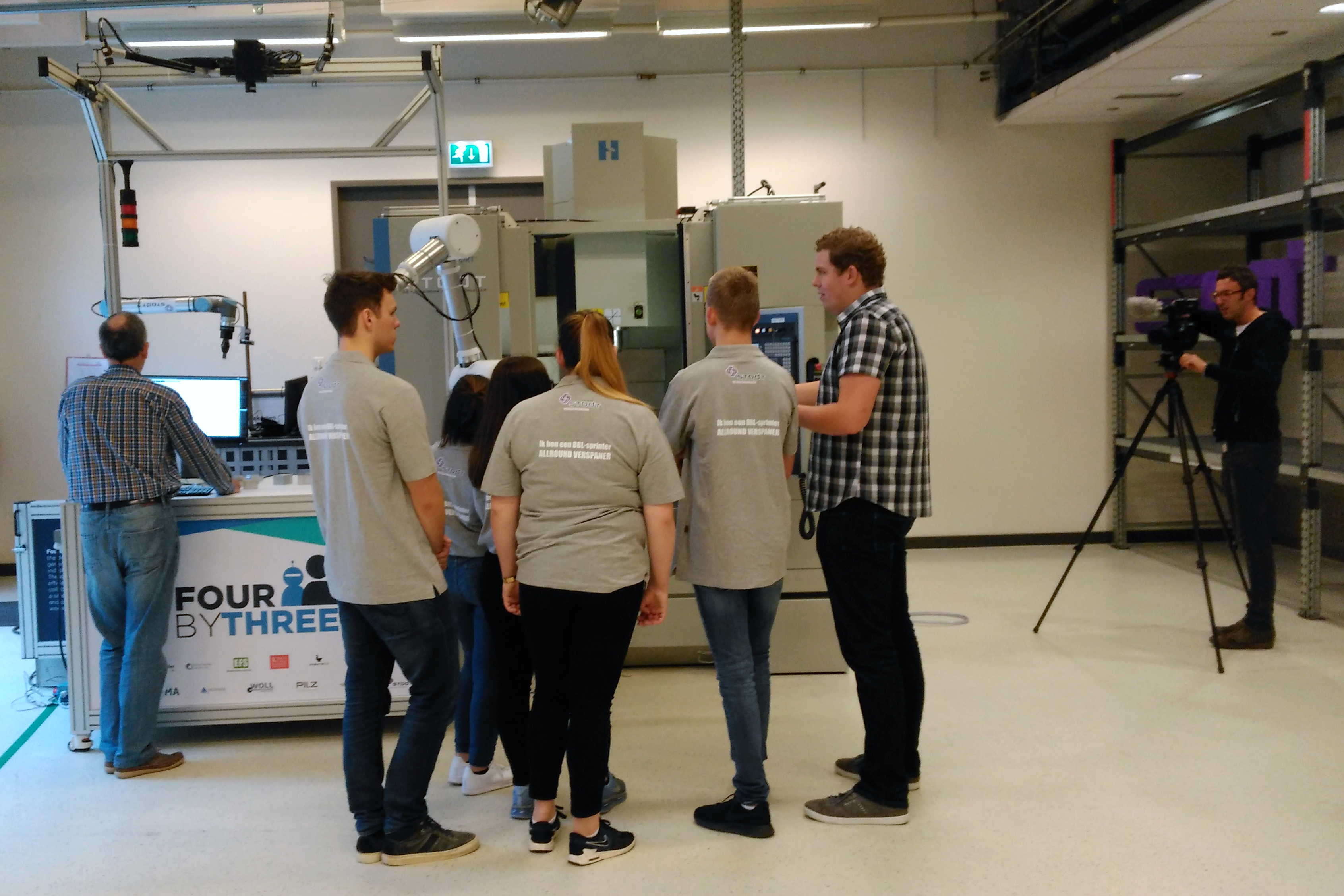Machining companies are busier than ever. The sector is doing well. Smart Industry or Industry 4.0 is creating major changes in the industry. More and more production is coming back to the Netherlands. It was previously attractive to produce, for example, in low-income regions such as Asia and the countries in Eastern Europe. But because new products have a shorter time to market, production series are becoming smaller in quantity, the demand of higher quality products and the faster delivery times, this option is not as attractive as it used to be. All of this requires flexibility in the production process, therefore in most cases it isn’t cost-effective to produce these products far away. Manpower is more expensive here, but machines are up-to-date, automated and advanced and employees are on a high level. In the Netherlands, we are strong in flexible automation and high-end techniques.
The development in the industry (4.0) in the supply chain is shifting downwards to the SMEs. There are many opportunities for these companies, and STODT tries to offer them these through the means of training. Some companies do not have a well thought strategic plan, most of the time they are busy surviving day by day, reacting to the changes with a short-term vision. But there are also many companies who are looking forward, having a well thought strategic plan and invest in technology, as well as their employees.
Companies need to make a switch to survive in the future, which requires companies to make a huge turn: other machines, technology, educating the employees and the standardization of processes. Larger manufacturers have already become aware of this. In the Netherlands, however, there are relatively few OEMs and many SMEs. These companies often do not have their own products and often do not have their own engineering. As a result, they have little influence on the design of the product, order size, lead time and production methods, therefore it is very difficult to automate and fully optimize a production process. However, another field of tension is that SMEs are often relatively small. Investing depends strongly on future expectations. Due to the new market situation, these companies often have a short order portfolio of about 14 days. Most of the times, they do not know what they have to produce after these 14 days. So, flexibility in automation and people and a higher level of intelligence of their employees is a must.
“An entrepreneur should ask himself the following questions: Where am I now, and where do I want to be in 5 years? Do I want to stay a jobber or do I want to specialize and move up in the supply chain to system vendor or main supplier?”
The use of high-quality technology in companies also imposes other requirements on the employees themselves, their knowledge and their skills. Previously, he or she was a CNC operator in front of the machine doing one task, now in the new market situation, he or she has to be a process manager. They program with a 3D model in a CAD-CAM system on a computer and direct the robot and the machine, and can switch quickly from one task to another. Everything is digital. As the demand for products is increasing so is the demand for these well-trained employees who can handle themselves in these new environments. There is little new inflow from schools, aging continues, and people with experience outflow, companies looking for automation solutions. More and more robots are being used in production environments to increase production without expanding staff.
Conditions and success factors
Companies often encounter problems when implementing robots. Knowledge is often lacking in the company and it is not so simple to implement a robot in a production environment. In order to properly implement a robot, it is important that the robot meets the following preconditions: robots must be easy and fast to program and operate, making them easy to use.
 STODT students learns about collaborative robotics with a FourByThree prototype.
STODT students learns about collaborative robotics with a FourByThree prototype.
In addition, employees must be trained well and there must be a good but simple interface between the robot and the different production machines, allowing the robot to be deployed flexibly in different working areas. Tools and grippers must be standardized and the robot must work accurately. Finally, the safety of the robot for the user and its immediate environment are very important. Safety is compromised because the robot must be flexible and multi-purpose. As a result, no fences can be placed, which means that safety must be regulated differently. This can be realized for example, by light shields or distance lasers. The disadvantage, however, is that this greatly limits the operator’s area of movement and its environment around the machine. It is the intention that the operator should work closely with the robot. For this purpose, the Horizon 2020 FourbyThree project has developed a cobot with a safety system that allows this collaboration between worker and machine.
STODT participates in the Horizon 2020 FourbyThree project to test these developed systems with end users and participants of training and courses. The participants in these courses will get experience working together with a cobot and the safety systems. On the other hand, project partners receive valuable feedback that allows them to customize and improve their design.
At STODT, participants at all levels gain experience with robots and now also with cobots in relation to production machines. Through the provision of awareness workshops, user training and special modules in the CNC courses, many possibilities and applications are being taught. The awareness workshop is used as the first introduction for operators and management. The user courses focus on robot users, giving them practical-oriented basic theory and instruction in safely operating the robot. In the special modules of the CNC training programs, participants are taught with extensive theory on the operation and applicability of the robots, choice of grippers, payload, etc. In addition, in project form, they are taught how to program the robot and implement it into a production area.
Because participants at all levels are able to train with these robots and cobots, the level of knowledge of the smaller production companies is brought to a higher level. Employees get acquainted with these techniques, therefore eliminating the resistance to these robots and taking the next step towards automated production. It is good to see that through the use of these cobots, the competitiveness of small SMEs is greatly improved and their future life is more guaranteed.
 Project partners from IK4-TEKNIKER and STODT collaborated in setting up the scenario.
Project partners from IK4-TEKNIKER and STODT collaborated in setting up the scenario.
STODT is an independent knowledge center and practice trainer that helps companies improve their engineering and manufacturing processes. For Smart Industry, STODT offers the high-tech machines and processes used in practice, according to the latest techniques, and, as a teacher, integrates professional specialists into business. The focus of the training is on practice, expert guidance and an up-to-date lesson programs. “Through technical business training, we realize knowledge transfer to further help the manufacturing industry.” In addition, STODT has established a “Learning Factory”, a High-tech Training Center for Employees in the Manufacturing Industry, equipped with a completely modern machine park and automation aimed at knowledge transfer and practical training for current and future developments in the area of Smart Industry These techniques should not be too far ahead of the techniques now used in the companies, but just aligned in order to be accessible.

